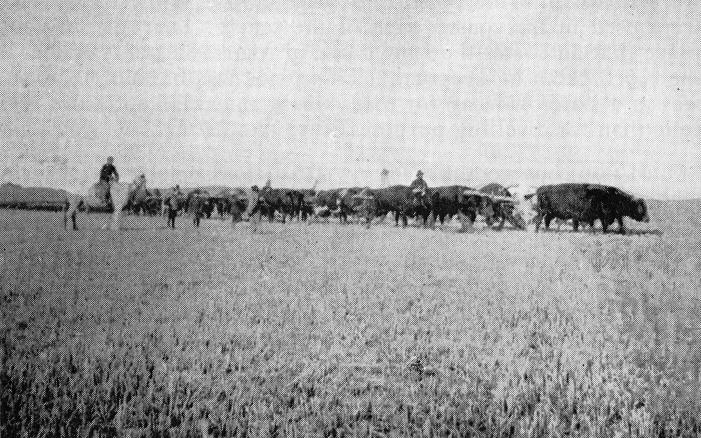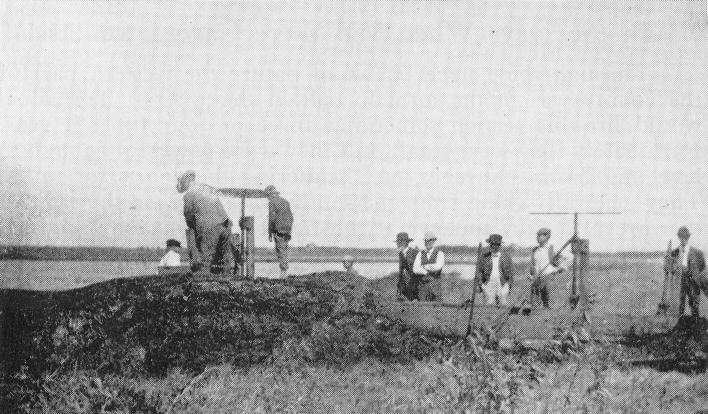 The "Bull Ditchers"; the first ditching outfit to make this section. They were here in 1900
The "Bull Ditchers"; the first ditching outfit to make this section. They were here in 1900
 Ditching machine pulled by a cable round a capstan in 1905
Ditching machine pulled by a cable round a capstan in 1905
—114—
About that time, which evidently was our storm period, came the lightning rod man. He generally followed in the wake of a storm with his helper and big spools of copper wire. Many a farm house was wired and they did a lot of good, mentally. They too have passed on, and now one seldom sees a rodded house. Some of the old rod men were "sharpers." You would sign up an order for wiring and after the job was done you found out you had a signed note for four times as much and it had been cashed at the local bank.
========================================
EARLY DITCHING
When the weather pendulum swung downwards about fifty years ago and water once more covered the sloughs and low places, the farmer turned to some kind of method of getting rid of the water. There were no tilers at that time so the water stood on the land until a bull ditching outfit came through this section in 1900. This ditching outfit was nothing but a big plow, pulled by twenty yoke of oxen. The outfit ditched the slough north of the platted portion of Lake Wilson, and when at work was a real show for the youngsters until the parents happened to hear the outfit at work. The bull punchers or whackers were gaunt, hairy fellows with whips almost as long as a cane fishpole and they could make the snapper crack like a rifle shot. Besides being picturesque they were the world's champions, when it came to using oaths. They were the most colorful bunch of swearers ever heard in this section and there were members of the home guard, that had advanced beyond the amateur class. When the going got tough the bull whackers would run up and down the line of oxen flicking tufts of hair and skin from the hide of the oxen with their powerful whips. Skillful guys those whackers were; they could snap a fly from the oxen when they were thirty feet away and never touch the hide. This type of ditch soon filled up and ten years later another outfit came through. This one had a bigger and better plow. It was operated by a huge cable which was wound around a big capstan by four teams of horses. It moved slowly and in the end gave but little relief; dirt, weeds, etc. clogging the ditch.
—115—
Previous Page
Next Page
Table of Contents
Index of Names
Home


